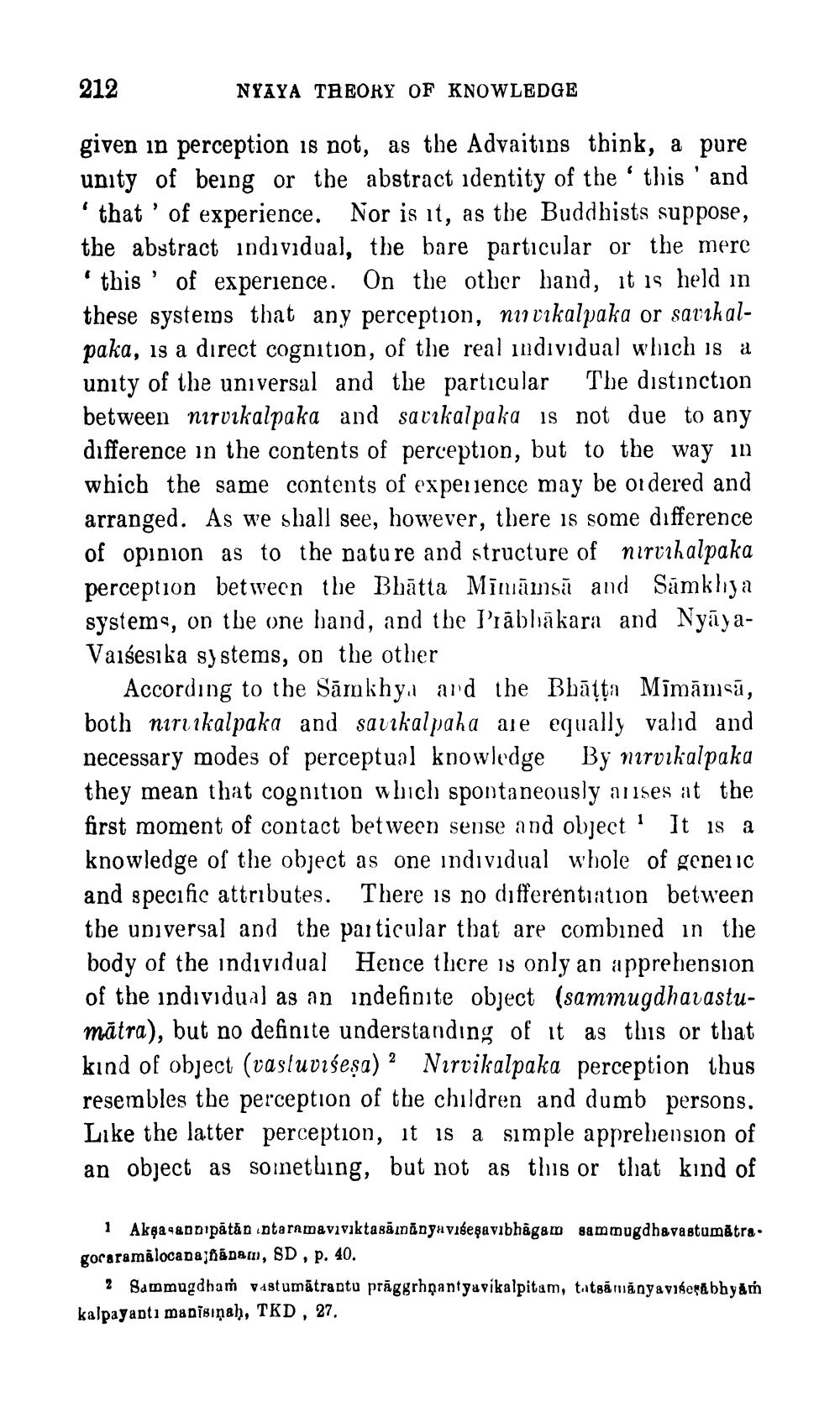________________
212
NYAYA TA EORY OF KNOWLEDGE
given in perception is not, as the Advaitins think, a pure unity of being or the abstract identity of the 'this ' and
that' of experience. Nor is it, as the Buddhists suppose , the abstract individual, the bare particular or the mere
this' of experience. On the other hand, it is held in these systems that any perception, niivikalpaka or savıkalpaka, is a direct cognition, of the real individual which is a unity of the universal and the particular The distinction between nirvikalpaka and savikalpaka is not due to any difference in the contents of perception, but to the way in which the same contents of experience may be ordered and arranged. As we shall see, however, there is some difference of opinion as to the nature and structure of nirvihalpaka perception between the Bhātta Mīmānsã and Sămkhya systems, on the one hand, and the Prābhākara and NyāyaVaisesika systems, on the other
According to the Sāmkhy, and the Bbātta Mīmānsā, both niruikalpaka and savikalpaka are equally valid and necessary modes of perceptual knowledge By nirvikalpaka they mean that cognition which spontaneously anses at the first moment of contact between sense and object? It is a knowledge of the object as one individual whole of generic and specific attributes. There is no differentiation between the universal and the particular that are combined in the body of the individual Hence there is only an apprehension of the individual as an indefinite object (sammugdhavastumātra), but no definite understanding of it as this or that kind of object (vastuvišeşa)? Nirvikalpaka perception thus resembles the perception of the children and dumb persons. Like the latter perception, it is a simple apprehension of an object as something, but not as this or that kind of
1 Akşa-apoipātán intaramaviviktasāmängaviseşavibhāgam sammugdhavastumatra. gocaramilocanajñādam, SD, p. 40.
2 Sammugdhaṁ vastumātrantu prāggrh antyavikalpitam, tatgā månyaviserabhyam kalpayapti manisiņah, TKD, 27.




